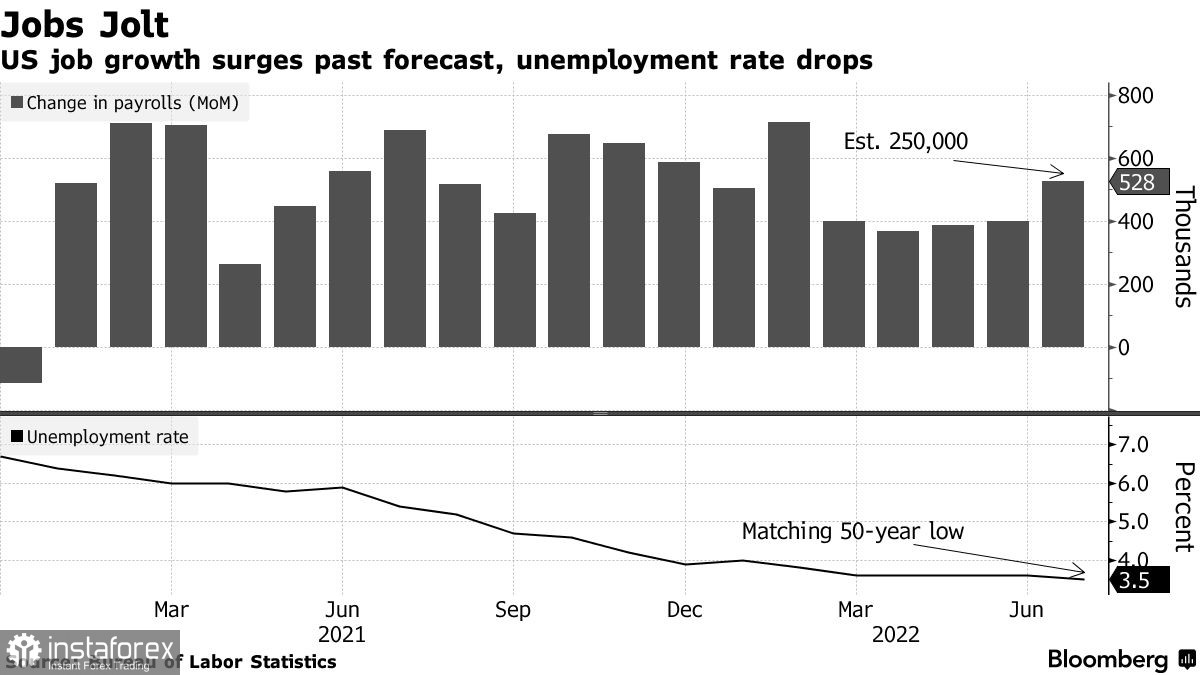The latest Fed meeting minutes have failed to stem the increasing pessimism among investors. The looming threat of recession in the US, which could quickly spread to other developed economies, is pushing down demand for the euro and the pound sterling.
According to the meeting minutes, which were released yesterday, Fed policymakers agreed to dial back its monetary tightening. However, the Federal Reserve wanted to assess how the ongoing policy measures are affecting inflation in the US. The latest US inflation data showed price growth has slowed down in July. "As the stance of monetary policy tightened further, it likely would become appropriate at some point to slow the pace of policy rate increases while assessing the effects of cumulative policy adjustments on economic activity and inflation," the minutes said. The FOMC meeting took place in Washington, D.C. on July 26-27.

"Many participants remarked that, in view of the constantly changing nature of the economic environment and the existence of long and variable lags in monetary policy's effect on the economy, there was also a risk that the committee could tighten the stance of policy by more than necessary to restore price stability," the document added.
During the meeting in July, Fed policymakers agreed on increasing the interest rate by 75 basis points for the second month in a row, the fastest pace of tightening since the early 1980s. Despite this hike, the euro has largely recovered against the dollar, while the S&P 500 gained 9% since its upsurge in July.
However, these movements in the market do not match the actual situation in the economy. The real estate market is contracting, and the downturn is increasingly affecting the manufacturing sector. This weighs down on retail sales, one of the key drivers of GDP growth. In this situation, traders that are bullish on risky assets could be hit hard. Traders should be extremely cautious when going long on EUR and GBP, even during the ongoing downward correction.
Fed policymakers are set to meet in Jackson Hole, Wyoming on August 25-27 to discuss the outlook on the US economy.
The FOMC meeting minutes still emphasize the need to contain inflation. There is a concern that the Federal Reserve could tighten its policy more than necessary. It would send EUR down towards parity with USD once again.
During the previous FOMC meeting, Fed chairman Jerome Powell left the door open for another "unusually large" hike in September, depending on the economic data to be released in the run-up to that meeting. Fed board members "judged that a significant risk facing the committee was that elevated inflation could become entrenched if the public began to question the committee's resolve to adjust the stance of policy sufficiently," the minutes said.

Today's key economic event is the eurozone inflation data, which will determine the pair's further trajectory. EUR/USD bulls could push the pair upwards if EUR/USD stays above 1.0150. If it settles at 1.0190, it could then return to 1.0220, which would open the way towards 1.0250 and 1.3010. However, if EUR slides down below 1.0150 and fails to hold on to 1.0130, it would likely then drop towards 1.0100, as bearish traders would try to overturn the pair's upward momentum caused by US inflation data. A breakout below 1.0100 would open the way towards 1.0070 and 1.0040.
Despite the pound sterling moving up yesterday and hitting new weekly highs, GBP/USD bulls would have to keep the pair above 1.2020. Otherwise, GBP/USD would not be able to recover in the near future. If the pair remains above this level, it could then rise towards 1.2060 and 1.2090. A breakout above this range would open the way towards 1.2120 and 1.2150 further ahead, as well as 1.2250. If GBP/USD breaks below 1.2020, the situation will drastically change for the worse. In this scenario, bears could push the pair down towards 1.1980 and 1.1960, eyeing 1.1930 further below.
 English
English 
 Русский
Русский Bahasa Indonesia
Bahasa Indonesia Bahasa Malay
Bahasa Malay ไทย
ไทย Español
Español Deutsch
Deutsch Български
Български Français
Français Tiếng Việt
Tiếng Việt 中文
中文 বাংলা
বাংলা हिन्दी
हिन्दी Čeština
Čeština Українська
Українська Română
Română

